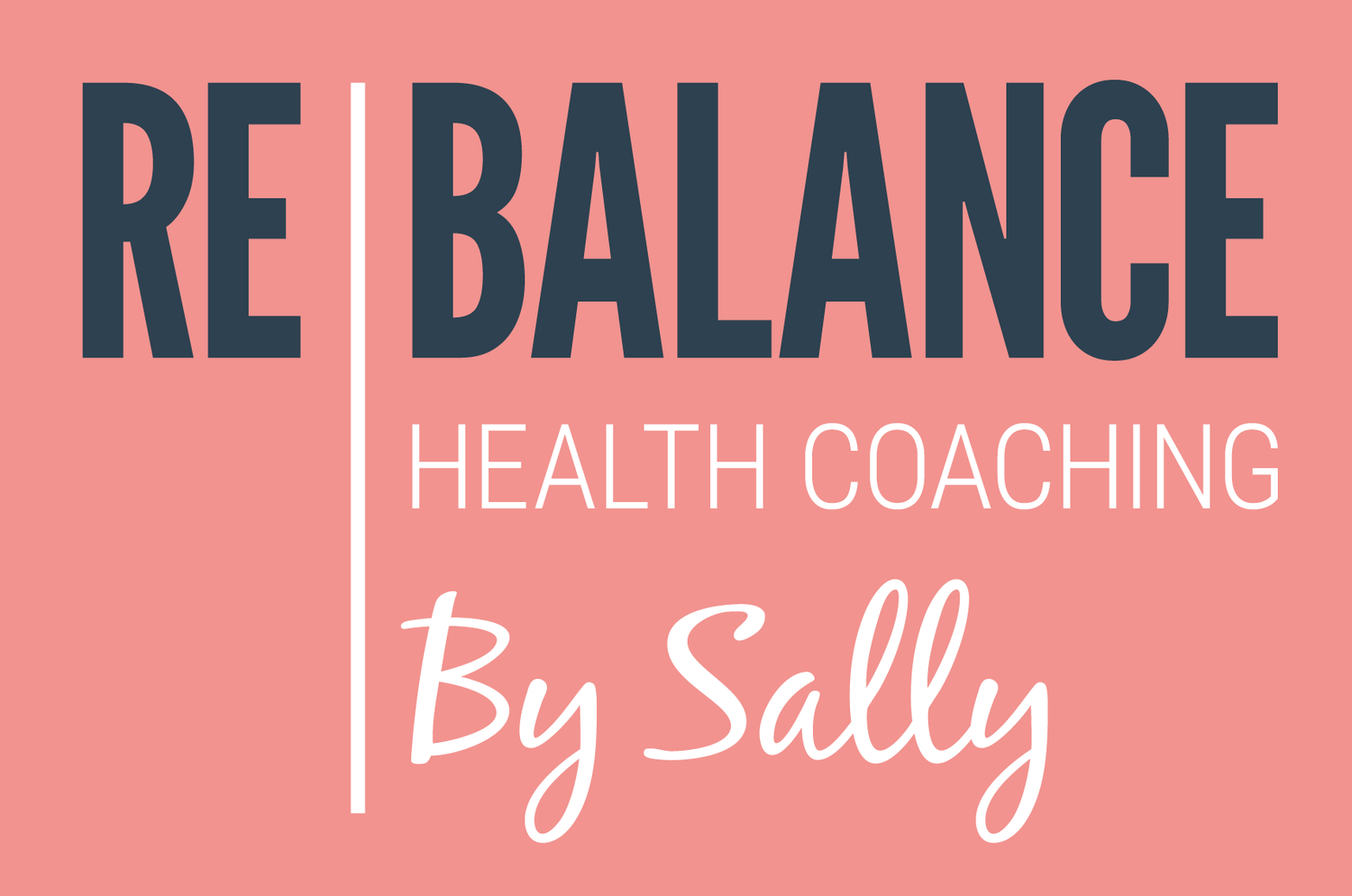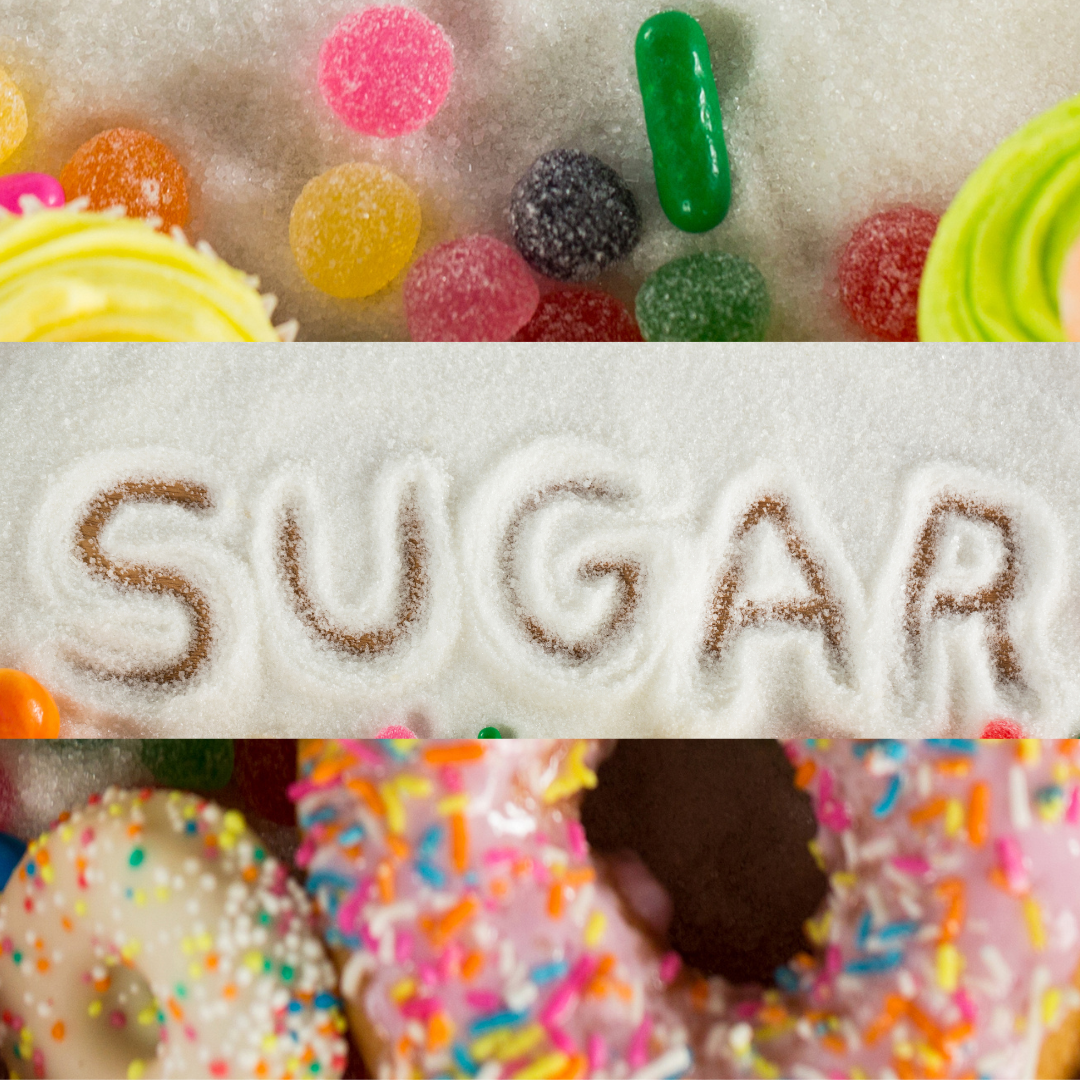The truth about sugar
So, let’s take a look at some truths about sugar (the refined, processed stuff not the naturally occurring kind found in fruits and vegetables) …..
Firstly, refined white sugar is highly addictive and has no nutritional value – no nutrients, no vitamins, no minerals. In fact, sugar depletes the body of vital vitamins and minerals which negatively impacts your health.
In addition, experts believe that sugar consumption is a major cause of obesity and many chronic diseases. For ladies going through the menopause transition, sugar is evil and will make your symptoms a whole lot worse. It can be tempting to reach for the sweet treats, especially when you’re tired, stressed or feeling emotional but you need to be aware of the following health risks.
10 health risks associated with regularly consuming excess sugar
1. Disrupts hormone balance triggering menopause symptoms
2. Causes weight gain & obesity
3. Increases risk of type 2 diabetes
4. Increases risk of heart disease
5. Accelerates aging
6. Can be a trigger for acne
7. Increases risk of kidney disease
8. Increases risk of Alzheimer’s disease
9. Depletes energy causing fatigue
10. Can trigger headaches
Why sugar and menopause don’t mix
Sugar and even natural sugars such as honey will cause a spike in blood sugar levels followed by a crash. This crash causes the stress hormone cortisol to be released which suppresses our sex hormones oestrogen, progesterone and testosterone making menopause symptoms worse. The crash in blood sugar also causes energy slumps and cravings which is when you reach for the sugary snacks which spikes your blood sugar levels and so the roller coaster continues.
The blood sugar spike stimulates the release of insulin. If blood sugar levels spike erratically and frequently this can lead to insulin resistance and longer term to type 2 diabetes.
During perimenopause and menopause, fluctuating blood sugar levels cause excess energy to be converted into fat which causes weight gain and increases the risk of type 2 diabetes and cardiovascular disease which menopausal and post menopausal women are more vulnerable to.
The Blood Sugar Roller Coaster
Be careful of hidden sugars
Many processed foods contain high amounts of hidden sugar. For example - jars of pasta sauce or curry sauce, soups, breakfast cereals, low fat fruit yoghurts, fruit juices, fizzy drinks and energy drinks, syrups in coffee, tomato ketchup, cakes, biscuits and even products claiming to be diet products.
STOP – don’t replace sugar with artificial sweeteners
It might be convenient to replace sugar with artificial sweeteners but these are also addictive, raise insulin levels and affect insulin sensitivity. They are considered to be toxic substances putting a burden on the liver and can cause DNA damage. Therefore, go for a natural alternative instead if you want an occasional sweet treat.
Natural alternatives to sugar
There are a few natural alternatives to sugar that could add vitamins and minerals to your diet or slow blood sugar spikes.
1. Stevia (stevia plant) – has no calories and doesn’t affect your blood sugar levels.
2. Pure organic maple syrup – has the same calories as sugar but lower GI (slower blood sugar rise) and contains nutrients such as calcium, potassium, iron and zinc.
3. Pure organic honey – contains vitamins, minerals, amino acids and electrolytes. It has lower GI than refined sugar but although it has more calories you can use less because it’s sweeter. Manuka honey has antibacterial and anti-inflammatory properties.
Tips to quit or reduce sugar
1. Check labels see above on reading food labels and hidden sugar advice. Avoid high sugar foods.
2. Eat protein with all meals and snacks to help balance your blood sugar and reduce cravings i.e. unsalted nuts with fresh fruit.
3. Eat more fibre in your diet such as fruit and veg, brown rice, oats and lentils. This will help you feel fuller for longer and therefore you’re less likely to crave sugary snacks. Fibre also helps with blood sugar regulation.
4. Don’t skip meals as this will cause a blood sugar crash leading to cravings and poor food choices.
5. Stay hydrated to help manage sugar cravings and essential for overall health.
6. Add cinnamon to your porridge, yoghurt or baked fruit to help balance blood sugar.
7. Exercise and movement will help to balance your blood sugar levels which will prevent those uncontrollable cravings for sugar. Take a walk in your lunch break or join a salsa dancing class with a friend, find movement that you enjoy and make it fun.
8. Get enough sleep research has shown that lack of sleep leads to poor food choices and also activates part of the brain responsible for sugar cravings.
Everything in moderation as they say! When you do want an occasional sweet treat use natural alternatives to sugar where possible and take time to enjoy them without guilt.
Sugar Swaps
Swap sugary breakfast cereal for porridge with berries, cinnamon, chia seeds & pecan nuts
Swap white toast with jam or marmalade with wholemeal or rye bread toast with almond or peanut butter or scrambled egg (nut butters of eggs for protein to balance blood sugar)
Swap pasta with tomato sauce for wholewheat pasta with passata, garlic, herbs and spices. Add prawns, salmon or tofu and spinach (protein from prawns, salmon and tofu)
Swap fizzy drinks for sparkling water with lemon, lime or mint
Swap fruit yoghurt for natural plain yoghurt with berries or stewed apples (natural yoghurt for protein, fruit for fibre)
Swap sugary snacks for apple with almond butter (apple for fibre, nut butter for protein)
To get support on quitting sugar, balancing blood sugar levels, balancing hormones or consuming a healthy balanced diet drop me a line for a free no obligation consultation rebalancebysally@gmail.com




